Ever noticed how electric scooter apps have made moving around cities so much easier?
You can grab a scooter, get going, and reach your destination on time. As cities are pushing for greener, more sustainable transport options, the demand for developing an eScooter app that is efficient and user-friendly is growing fast.
But here’s the thing: building a solid e-scooter app isn’t a smooth process. There are various challenges of an eScooter app in the way.
In this blog, we will work through some of the common development challenges for an eScooter app and provide ideas on how to tackle them. By understanding these hurdles, you’ll be able to create an eScooter app that not only meets your users' needs but also stands out in the competitive e-scooter market.
Ready? Let’s dive into it.
eScooter Apps: The Future of Urban Mobility
An eScooter app allows users to rent electric scooters on-demand, providing a quick, eco-friendly, and convenient transportation option for short trips. The app connects users with nearby scooters, facilitates booking, and handles payment seamlessly.
Key features of an eScooter app include real-time scooter tracking, ride history, payment integration, user profiles, GPS navigation, and in-app support. These features ensure a smooth and user-friendly experience.
The eScooter market is growing and attracting investors with an increasing demand for eco-friendly transportation solutions in urban areas. As more cities embrace sustainable mobility, the industry is set for expansion.
However, the eScooter app development includes several challenges that you should know before developing an app. Let's explore it in the next section.
Development Challenges of an e-Scooter App
Building a successful eScooter app is a wise decision, as the eScooter app market is growing rapidly. However, this app development requires overcoming a range of technical and operational challenges.
Let's discuss the list of eScooter app challenges that you should know before developing an electric scooter app.
1. Real-Time GPS Tracking
Real-time GPS tracking is one of the biggest development challenges in eScooter apps. Suppose users need to find available scooters quickly but they don't know the exact spot of the scooter. The app isn’t tracking them accurately. Frustrating, right?
To be the best eScooter app, it's crucial that the GPS tracking system works flawlessly to allow users to locate scooters quickly and efficiently. Not only does this improve the user experience, but it also helps in managing the entire fleet smoothly.
Solution:
-
Integrate reliable GPS mapping technologies (Google Maps, Mapbox).
-
Use real-time tracking APIs that update locations frequently.
-
Optimize GPS accuracy by using hybrid GPS techniques (i.e., combining GPS, Wi-Fi, and Bluetooth).
-
Try to update your app’s mapping and GPS libraries regularly to enhance performance.
2. User Authentication and Security
Here’s a big one: user authentication and app security.
E-scooter apps handle personal info and payment details. Definitely, customers don’t want to deal with the risk of unauthorized access, right? So, you should make sure everything is locked down, which is a must.
The main challenge for an eScooter app is keeping users' sensitive information safe. This is key to building trust with your users and giving them peace of mind, knowing their information is secure.
Solution:
-
You can use multi-factor authentication (MFA) for extra security during login.
-
Try to implement secure data encryption protocols (SSL/TLS).
-
Employ OAuth for safe third-party authentication (Google/Facebook login).
-
Regularly audit security measures to stay ahead of emerging threats.
3. Payment Integration
Let’s talk about another major development challenge of eScooter apps: managing payments.
Users want to pay quickly and securely, without any hassle. If there’s a delay or an issue with a payment, it can really mess up their experience. Think about it: someone is going to pay and your app shows them "payment failed; try again." Disappointing, right?
That’s why making the payment process smooth and hassle-free is super important.
Solution:
-
You can integrate trusted payment gateways like Stripe or PayPal.
-
Offer various payment options (credit/debit cards, mobile wallets).
-
Ensure secure encryption of payment details.
-
Provide a smooth and intuitive checkout process for users.
4. App Performance and Load Handling
No one likes an app struggling to load, right?
So, with a large user base, the app must be able to handle high traffic and real-time data updates efficiently. The top development challenges of an eScooter app involve ensuring the app remains fast and responsive.
Solution:
-
Use cloud-based infrastructure to ensure scalability.
-
Optimize the app for speed by using compression and caching techniques.
-
Implement load balancing to prevent server overloads.
-
Regularly test the app’s performance during peak traffic hours.
5. User Experience (UX) Design
If the app is hard to use or confusing, there is a high chance that users will skip the app and go for the alternative option.
A poor user experience can lead to high abandonment rates. It is a challenge to create a simple, intuitive eScooter app design that caters to diverse users, including both tech-savvy and novice users, ensuring that everyone can navigate the app with ease.
Solution:
-
Prioritize a clean, easy-to-navigate interface.
-
Use visual cues (icons, buttons) for actions like unlocking and payment.
-
Design a seamless onboarding process for new users.
-
Collect user feedback regularly to improve the app’s design.
6. Data Syncing and Real-Time Communication
Data syncing and real-time communication play a crucial role in ensuring smooth, real-time communication between the app, scooters, and backend systems, which is one of the main development challenges of eScooter apps.
Data syncing can sometimes be unreliable in areas with poor connectivity.
Solution:
-
Use web sockets for real-time data updates between devices.
-
Implement offline mode features to allow users to book rides even without a stable connection.
-
Optimize data syncing protocols to reduce delays and data loss.
-
Test app performance in different network conditions to ensure reliability.
7. Regulatory Compliance
Here’s another thing to think about: every city or country has its own rules for electric scooters, like speed limits, where you can park them, and safety regulations. It can get pretty tricky, right?
Challenges while developing eScooter apps include staying compliant with these rules. It’s all about adapting to each place and making sure everything runs smoothly, no matter where the scooters are.
Solution:
-
Regularly update the app to reflect local laws and regulations.
-
Include real-time notifications or warnings for users regarding local rules (e.g., no-riding zones, speed limits).
-
Collaborate with local authorities to ensure full compliance.
-
Integrate features that automatically stop scooters in restricted zones.
8. User Reviews and Ratings
User reviews and ratings are a great way to build trust, correct?
But here’s the challenge for an eScooter app: fake reviews can easily mess with the app's reputation. It’s a tricky thing to manage because you want real feedback to shine through, but sometimes it’s hard to filter out the fakes.
That’s why keeping the review system honest and trustworthy is so important.
Solution:
-
Allow only verified users (those who have completed rides) to leave reviews.
-
Use AI to detect and remove suspicious or fraudulent reviews.
-
Implement rating systems for both the scooter and the rider.
-
Offer incentives for users to leave honest feedback.
9. Integration with IoT Devices
Another area where things can get tricky is integration with IoT devices. Why? Because this device can track important scooter data, like battery levels, location, etc. But this process can be pretty complicated.
Solution:
-
Work with reliable IoT providers who offer robust APIs and SDKs.
-
Regularly test the connection between the app and IoT devices.
-
Implement seamless syncing between the app and hardware for accurate data.
-
Use error-reporting features to flag connection issues promptly.
10. Localization and Language Support
Through localization and language support, you can expand your business into global markets, which means your app supports multiple languages and regional preferences.
It is one of the most important challenges of an eScooter app that your app should not support different cultures and languages.
Solution:
-
Implement automatic language switching based on user location.
-
Offer full localization, including legal and regulatory requirements for different regions.
-
Provide currency conversion and pricing models suited to local markets.
-
Hire native speakers for translations to maintain cultural relevance.
11. Scalability Issues
Here’s something to think about: Scalability.
With the increasing popularity of the app, it needs to handle a growing number of users, scooters, and data efficiently. If it can’t scale properly, that’s when you can face problems like downtime or performance issues. No one wants to deal with that, right?
So, making sure the app can grow smoothly with its user base is super important for keeping everything running smoothly.
Solution:
-
Use cloud-based services (AWS, Google Cloud) that allow for automatic scaling.
-
Implement a microservices architecture for more efficient handling of different app components.
-
Test the app’s scalability under simulated high-traffic conditions.
-
Optimize databases to handle large volumes of user data.
12. Customer Support Integration
Here’s a big one: customer support integration. Without it, you’re not able to offer quick and effective service within the app and that’s a common challenge of the eScooter app. Think about it: users might run into issues with their rides, payments, or scooters, and if they can’t get fast help, it can cause a lot of frustration. Right?
Let's discuss some solutions.
Solution:
-
Integrate in-app chat support or a chatbot to handle common inquiries.
-
Provide a help centre with FAQs and troubleshooting guides.
-
Offer a clear escalation process for more complex issues.
-
Implement user-friendly reporting features for issues like broken scooters or payment problems.
13. Cost Optimization & Business Model
One of the biggest development challenges in eScooter app is finding the right balance between development costs and long-term revenue. Cost optimization becomes tricky when you consider the high expenses of ongoing maintenance, customer acquisition, and operational costs.
Additionally, choosing the best eScooter app business model like a pay-per-ride, subscription, or hybrid model can be a tough decision, as it must align with market demand while ensuring profitability.
Solution:
-
Use open-source libraries and frameworks where possible to cut costs.
-
Outsource non-core tasks to reduce overheads.
-
Focus on cost-effective marketing strategies such as social media or referrals.
-
Continuously analyze app performance and eliminate unnecessary features that add costs.
14. Marketing and User Acquisition
Attracting new users and retaining them in a competitive market can be difficult. The top development challenges of an eScooter app include standing out from the competition and building a loyal customer base.
Solution:
-
Use targeted digital marketing strategies like social media ads and search engine optimization (SEO).
-
Partner with local businesses or events to increase app visibility.
-
Offer referral bonuses and loyalty programs to encourage user retention.
-
Engage with users on social platforms and encourage user-generated content.
15. Safety Features
When it comes to eScooter apps, making sure riders are safe is one of the most important challenges while developing eScooter apps. But it’s not just about adding safety features to the app; it’s also about getting users to actually follow the rules and ride safely.
How do you make sure everyone’s staying safe while still making the app easy to use? That’s where things get tricky.
Solution:
-
Implement speed limiters to prevent dangerous speeds in certain areas.
-
Add a helmet reminder feature or suggest safe riding practices.
-
Incorporate accident detection technology to alert emergency services if needed.
-
Provide in-app safety tutorials to educate users on proper scooter handling.
16. Third-party Integration
Most of the eScooter apps require third-party services, like traffic data providers, insurance companies, or geolocation services, for their integration. While developing an eScooter app, the primary difficulties are integration with such third-party services and not having any effect on the smooth working of the application.
But you can achieve this by partnering with the right mobile app development company that can help you with proper third-party integration.
Solution:
-
Use standard APIs and SDKs compatible with third-party services.
-
Perform thorough monitoring and testing to identify problems before they cause significant damage.
-
Create error-handling procedures for potential integration failures.
-
Select reputable third-party service providers with a good reputation for uptime and support.
17. Cost of Maintenance and Operational Logistics
Running a fleet of electric scooters is expensive. The logistics of ensuring scooters are fully charged, well maintained, and distributed throughout the city in high-demand areas can be one of the biggest development challenges in eScooter apps.
Solution:
-
Use predictive maintenance tools to identify issues before they lead to downtime.
-
Implement efficient charging station management to minimize scooter downtime.
-
Optimize the deployment and collection process by using data analytics to predict peak demand areas.
-
Partner with local businesses or charging stations to provide cost-effective charging solutions.
This is the ultimate guide to development challenges of an eScooter app. By following the guide, you can avoid the challenges in your app and build a user-friendly application.
Build an Exclusive eScooter App with JPLoft
It does not matter which kind of new and user-friendly eScooter app you want to develop; JPLoft, as a well-known eScooter app development company, can be an ideal partner to fulfill your dreams. With years of experience in the development of a mobile app, we specialize in creating custom solutions for eScooters that cater to every unique business requirement.
Our teams focus on creating secure, scalable, and feature-rich apps, ensuring a smooth user experience in booking, payments, and tracking processes. Whether you're just beginning an eScooter service or need to enhance an existing one, we can provide you with end-to-end development.
Help us build an exclusive eScooter app uniquely different in the market and bring value to your customers differently. Let's take the first step together toward transforming your eScooter business.
Conclusion
Developing an eScooter app is not an easy task; many challenges come in the development journey. But getting it right can lead to something really special. Tackling challenges like creating a smooth user experience, ensuring top-notch security, and addressing scalability issues opens up opportunities for improvement and innovation. Each problem is a chance to make the app even better.
By understanding these hurdles and planning ahead, developers can create apps that not only meet customer expectations but also stand out in a crowded market. It’s about making sure your eScooter app is reliable, efficient, and fun to use. When it all comes together, it not only becomes an app but also a valuable tool that makes urban transportation more efficient, eco-friendly, and even enjoyable.
So, keep these challenges in mind, and with the right approach, you’ll have an app that not only works but thrives. It will satisfy your users and you will be ready to survive in this growing market.
FAQs
Some of the common issues are ensuring user-friendly design, real-time tracking, security of the app, managing payments, scaling the app, GPS and connectivity issues, and local regulations.
GPS and connectivity issues can cause inaccurate scooter tracking or delay ride status updates. To solve this, use reliable mapping services and ensure the app works well in various environments with weak signals.
Using secure, trusted payment gateways and offering multiple payment options like credit cards, mobile wallets, or in-app payments ensures easy and reliable transactions for users.
Scaling involves optimizing the app’s backend, cloud infrastructure, and databases. A flexible and robust architecture is essential to support increasing numbers of users and scooters as your business grows.
Yes, regulations vary by location. These may include rules on scooter parking, speed limits, or user age restrictions. It’s important to stay informed about local laws and integrate necessary compliance features into the app.





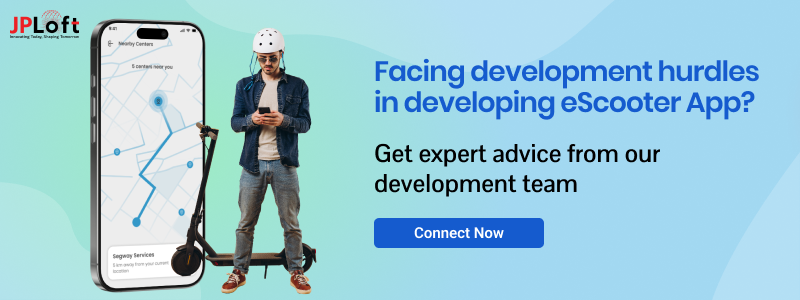
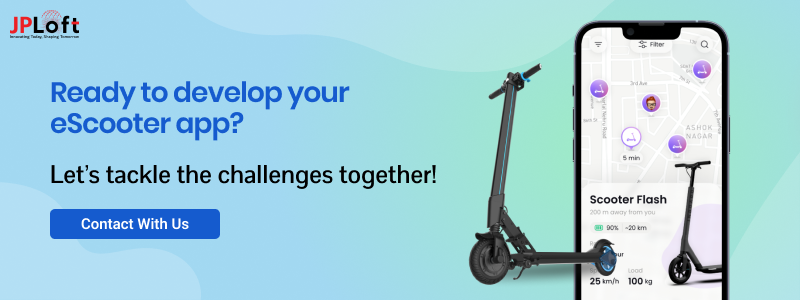

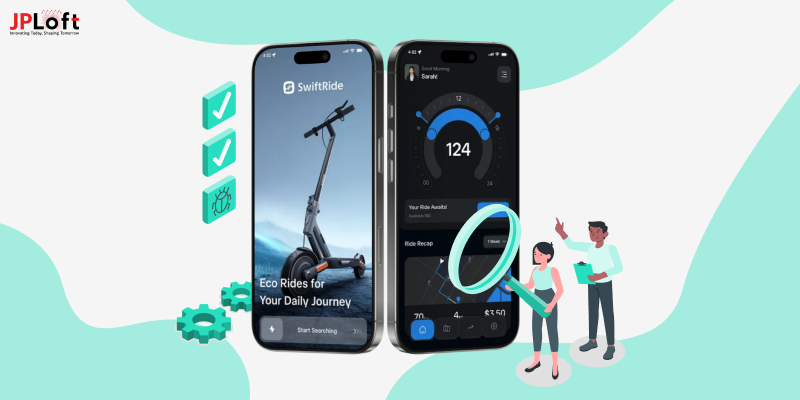
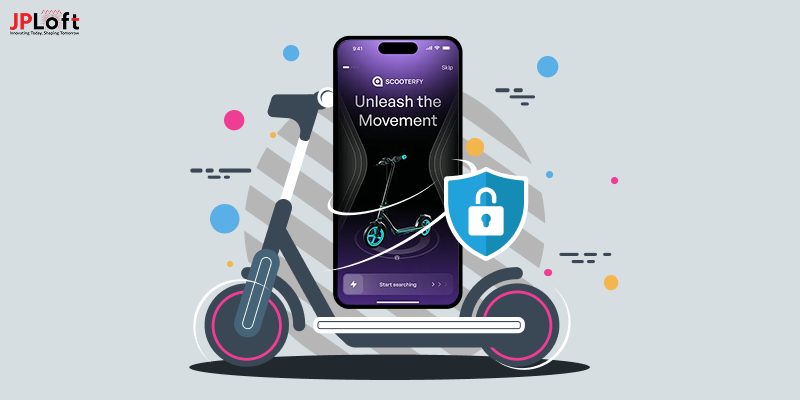
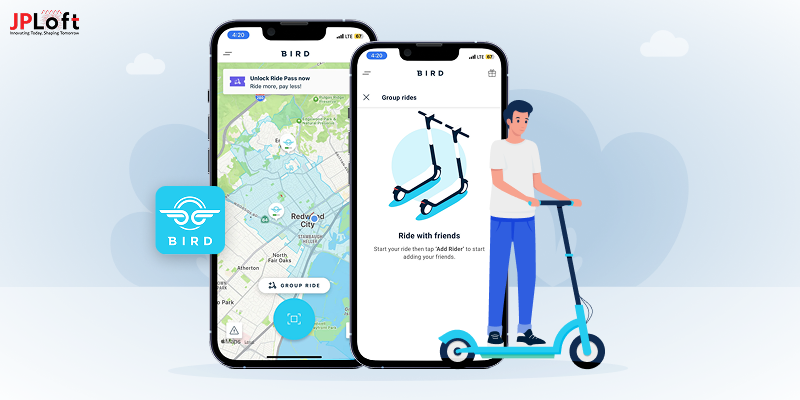


Share this blog